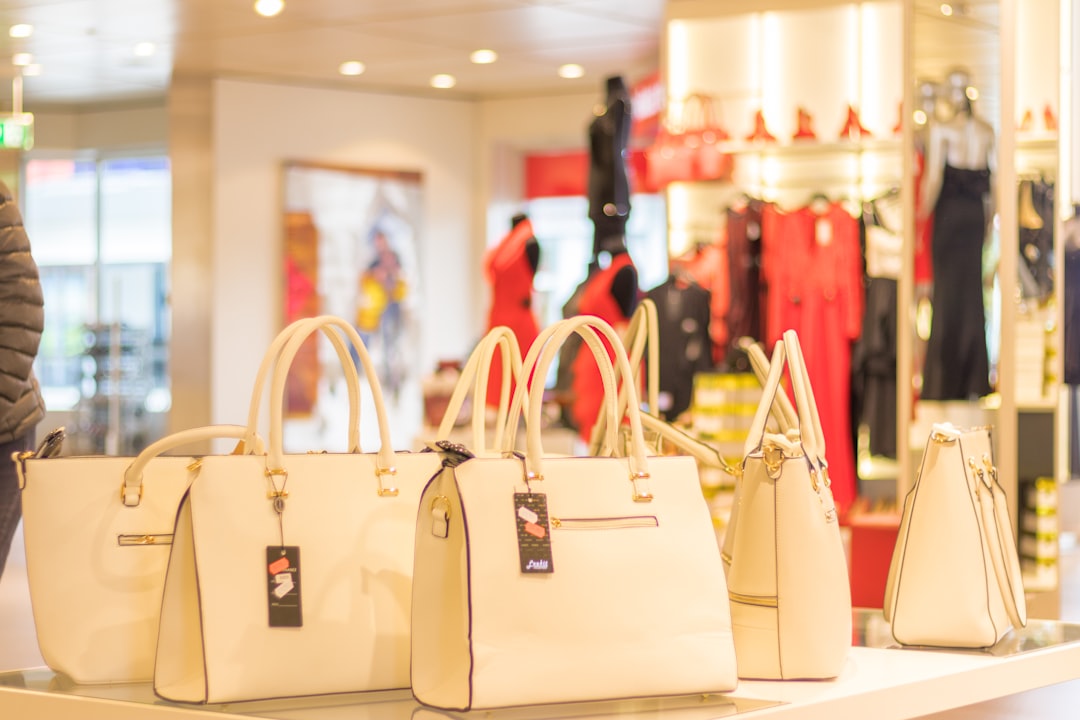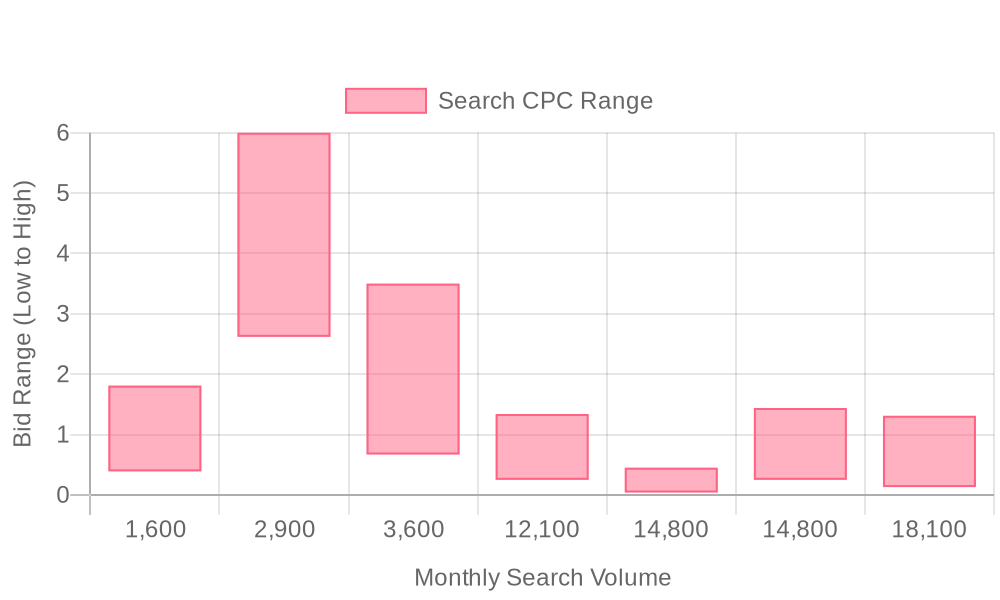
Supercharge your lead generation with a FREE Google Ads audit - no strings attached! See how you can generate more and higher quality leads
Get My Free Google Ads AuditFree consultation

No commitment
Supercharge your lead generation with a FREE LinkedIn Ads audit - no strings attached! See how you can generate more and higher quality leads
Get My Free Google Ads AuditFree consultation

No commitment
Supercharge your lead generation with a FREE Meta Ads audit - no strings attached! See how you can generate more and higher quality leads
Get My Free Google Ads AuditGet My Free LinkedIn Ads AuditGet My Free Meta Ads AuditFree consultation

No commitment
Supercharge your lead generation with a FREE Google Ads audit - no strings attached! See how you can generate more and higher quality leads
Get My Free Google Ads AuditFree consultation

No commitment
In today's competitive retail shoe landscape, capturing potential customers at the precise moment of their online journey is more critical than ever. Google Ads plays a pivotal role in this strategy by aligning marketing efforts with consumer intent, delivering visibility, and driving conversions. For those navigating the retail shoe industry, understanding how to effectively leverage Google Ads can create significant opportunities to elevate brand presence and boost sales metrics. However, many retailers face challenges like missing high-value prospects when they aren’t tracked in the CRM, leading to lost opportunities. Addressing this can ensure that ad spends target real decision-makers rather than cold, unqualified traffic.

Retail shoe brands operate in a fast-moving market where digital visibility and precise targeting directly influence sales outcomes. Maximizing ROI in this segment demands not just running ads, but aligning every campaign element with customer intent and real-time demand signals.
Success hinges on unified data, granular audience insights, and adaptive campaigns that evolve alongside market behavior. With the right framework, marketers can build a system that continuously identifies high-value leads, personalizes engagement, and delivers measurable sales impact. Get started for free with Sona.
Retail shoe businesses operate in a fast-moving market where timing and relevance are critical for capturing customer interest. Google Ads empowers footwear retailers to intercept high-intent shoppers exactly as they search for specific styles, brands, or local inventory, resulting in maximized visibility and conversion potential. For an overview and to get started, explore Google Merchant Center, which enables businesses to upload product data for Google Shopping and advertising.
Immediate engagement is essential: every delay between a shopper’s search and a brand’s response decreases the likelihood of a sale. Modern automation and data synchronization ensure that marketing and sales teams react instantly, allowing retailers to capitalize on real-time demand signals. By leveraging insights from Google Ads, retailers can refine audience targeting, optimize spend, and continuously improve return on ad spend (ROAS), making every dollar invested in online shoe advertising deliver measurable business impact.
In a competitive landscape, actionable data is the differentiator. Retailers using advanced platforms can move beyond anonymous web traffic by leveraging identification tools to see which visitors are in-market and prioritize outreach to those most likely to convert. This approach not only streamlines digital campaigns but also connects online activity with in-store results, supporting a holistic retail shoe marketing strategy that unifies digital and physical buying journeys. If you're ready to transform your approach, get started for free with Sona.

Retail shoe marketers who prioritize actionable data and audience insights can unlock significant growth by selecting the right Google Ads campaign formats. The retail footwear sector thrives on visibility, precise targeting, and timely engagement, making campaign selection critical for efficient spend and consistent brand lift. For a deeper dive into B2B marketing analytics and best practices, visit the Sona blog.
Retail footwear marketers face a dynamic competitive landscape where precision and agility drive results. The most successful teams consistently identify untapped audiences and leverage emerging channels to push their brands ahead. Explore actionable strategies in our footwear Google Ads guide or discover additional best practices in our marketing playbooks.
Ready to put these growth tactics into action? Get started for free with Sona.

Effective audience segmentation is foundational for driving higher returns from Google Ads for Retail Shoes. By creating granular audience groups, marketing teams can deliver precise messaging that resonates with real buyer needs and maximizes campaign efficiency.
This structured approach to audience segmentation supports advanced Google Ads strategies for retail shoes, ensuring every campaign speaks directly to the needs and motivations of each segment. For a deeper dive into optimizing remarketing, explore retargeting strategies. If you’re ready to take your segmentation to the next level, get started for free with Sona.

| Industry | Keyword | Monthly Search Volume | Competition Level | Low Bid | High Bid |
| Retail Shoes | retail shoes | 1600 | HIGH | 0.39 | 1.81 |
| Retail Shoes | niketown | 2900 | HIGH | 2.62 | 6 |
| Retail Shoes | orthofeet store near me | 3600 | HIGH | 0.67 | 3.5 |
| Retail Shoes | eastbay shoes | 12100 | HIGH | 0.25 | 1.34 |
| Retail Shoes | dsw shoes near me | 14800 | HIGH | 0.04 | 0.45 |
| Retail Shoes | shoe city | 14800 | HIGH | 0.25 | 1.44 |
| Retail Shoes | foot locker shoes | 18100 | HIGH | 0.13 | 1.31 |
Effective keyword strategy for Google Ads in the retail shoes sector hinges on prioritizing buyer intent and channeling spend to terms that drive measurable action. Retailers who focus on high-volume, product-specific keywords, such as “buy women’s running shoes online” or “men’s leather dress shoes free shipping,” consistently outperform generic campaigns in both click-through rates and conversion. These terms reflect customers ready to purchase, ensuring budget efficiency and higher ROI. For a detailed overview of setting up and optimizing Google Shopping campaigns, review this Google Shopping Ads tutorial.
Long-tail keywords are crucial to capturing niche markets and seasonal trends within footwear PPC campaigns. Terms like “vegan sneakers for wide feet” or “kids’ waterproof hiking boots sale” attract high-value traffic by aligning ad copy with user search intent. To optimize spend, use negative keywords to filter out low-converting searches such as “shoe repair” or “free shoe designs,” keeping campaigns focused on motivated buyers. Predictive analytics can further refine keyword lists by identifying which queries correlate with customers who progress rapidly from initial click to purchase. Explore intent signal strategies to better identify and prioritize your most engaged prospects.
Integrating real-time intent data ensures campaigns adapt as consumer behavior shifts. By monitoring engagement signals and purchase indicators, marketers can dynamically adjust keyword bids and focus on segments with the highest likelihood to convert. Sona syncs enriched audience insights directly into Google Ads, unifying CRM data with campaign targeting so revenue teams can move beyond static keyword lists and create adaptive, intent-driven strategies that maximize every ad dollar. Ready to optimize your shoe retail campaigns? Get started for free with Sona.
Effective Google Ads for Retail Shoes start with precision-targeted keyword lists. Segment keywords by product category, such as athletic, casual, or formal shoes, and align each group with specific purchase intent stages. This ensures that campaigns reach shoppers actively searching for your style of footwear with buying intent. Apply negative keyword filters to exclude irrelevant searches, minimizing wasted budget and focusing spend where it delivers the highest return with guidance from the Shopify Google Shopping Ads guide.
Marketers leveraging advanced data platforms can move beyond standard keyword clustering by identifying not just search terms, but the companies and decision-makers visiting their site. Synchronizing this visitor intelligence with Google Ads enables dynamic audience targeting and more granular retargeting strategies, increasing the likelihood of capturing high-value, in-market leads.
Ad copy for footwear PPC campaigns should directly address consumer pain points, such as comfort, durability, or style versatility, and showcase differentiators like exclusive collections or free returns. Tailor both headlines and descriptions to match the exact queries and needs of shoppers, maximizing relevance and click-through rates. Authenticity and clarity in messaging drive stronger engagement, particularly when paired with strong calls to action and clear value propositions. For community-driven insights, explore this Google Ads marketing strategy discussion.
Using real-time audience data, marketing teams can identify real-time shifts in what specific segments are searching for. This enables rapid adjustments to ad messaging and creative, ensuring campaigns capitalize on emerging trends or competitive advantages as they unfold in the search landscape.
Landing pages must seamlessly align with ad intent, mirroring the keywords and value propositions highlighted in ad copy. Clear navigation, prominent product visuals, and concise descriptions help users quickly evaluate options. Integrate trust signals such as verified reviews, testimonials, and warranty information to alleviate hesitation and reinforce brand credibility. For a detailed walkthrough, refer to this Google Shopping Ads video tutorial. Streamlined checkout processes further reduce friction and abandonment.
When integrated with advanced attribution and buyer journey tracking, marketers can track every touchpoint—online and offline—that contributed to a conversion. This holistic visibility enables continual refinement of landing page content based on what truly drives buyer action, not just what generates clicks.
Continuous performance tracking is essential for maximizing the ROI of retail shoe marketing campaigns. Monitor conversion rates, cost per acquisition, and audience engagement to pinpoint areas for improvement. Adjust bidding strategies and ad placements in response to real-time analytics, ensuring budget prioritizes the channels and audiences most likely to convert. Explore the Google Merchant Center to manage product data and optimize your ad presence.
By connecting CRM and enriched audience data directly to Google Ads, marketers can dynamically update retargeting lists and lookalike audiences as prospects progress through the funnel. Sophisticated platforms enable seamless audience syncing and attribution, empowering teams to shift spend toward high-intent leads and capture offline conversions alongside digital results. This unified approach ensures that every optimization is grounded in actionable, end-to-end data. Ready to take action? Get started for free with Sona.
A multi-faceted approach to retail shoe marketing unlocks new growth opportunities and deepens customer relationships. Blending data-driven insights with creative outreach maximizes brand reach and campaign performance in a crowded market. For actionable guidance on retail marketing analytics, explore the Sona blog or get started for free with Sona to see how advanced attribution can drive your growth.
Navigating the complexities of Google Ads for your retail shoe business can be a game-changer, transforming how you engage with customers and drive sales. By harnessing the power of targeted advertising, you can increase visibility and attract a wider audience eager to discover your shoe offerings.
Throughout this guide, we've explored the essential strategies for leveraging Google Ads effectively. From understanding keyword optimization to crafting compelling ad copy and monitoring performance metrics, each step plays a critical role in enhancing your online presence and maximizing your return on investment.
Embrace the potential of digital advertising and make impactful changes that set your shoe retail business apart. The insights and tools discussed can empower you to create campaigns that resonate with your target audience, ensuring your products reach those who value them most.
If you're ready to elevate your advertising efforts and see tangible results, start for free to experience our platform and its capabilities today. Let us support your journey to success in the competitive retail market.
To effectively use Google Ads for your shoe store, align your campaigns with customer intent, utilize precise keyword targeting, create engaging ad copy and visuals, and optimize landing pages for conversion. Leverage real-time data and audience insights to continuously refine and adapt your strategies.
Costs associated with Google Ads for retail shoes depend on factors such as keyword competition, targeting strategies, and ad formats. Focus on metrics like return on ad spend (ROAS) and cost per acquisition (CPA) to manage and optimize your advertising budget efficiently.
Strategies to increase sales through Google Ads include conducting industry-specific keyword research, crafting compelling ad copy, leveraging Google Shopping Ads, utilizing remarketing, and optimizing landing pages for conversions.
To set up a Google Merchant Center account for your shoe products, visit the Google Merchant Center website, create an account, and upload your product data. This will allow your products to be discoverable across Google Search, Shopping, and YouTube.
Best practices for Google Shopping ads in the footwear industry include managing detailed product feeds, using dynamic audience updates, and remarketing to retarget interested shoppers. Ensure that product descriptions are accurate and visually appealing to maximize visibility and sales.
Join results-focused teams combining Sona Platform automation with advanced Google Ads strategies to scale lead generation

Connect your existing CRM

Free Account Enrichment

No setup fees
No commitment required

Free consultation

Get a custom Google Ads roadmap for your business
Join results-focused teams combining Sona Platform automation with advanced Meta Ads strategies to scale lead generation

Connect your existing CRM

Free Account Enrichment

No setup fees
No commitment required

Free consultation

Get a custom Google Ads roadmap for your business
Join results-focused teams combining Sona Platform automation with advanced LinkedIn Ads strategies to scale lead generation

Connect your existing CRM

Free Account Enrichment

No setup fees
No commitment required

Free consultation

Get a custom Google Ads roadmap for your business
Join results-focused teams using Sona Platform automation to activate unified sales and marketing data, maximize ROI on marketing investments, and drive measurable growth

Connect your existing CRM

Free Account Enrichment

No setup fees
No commitment required

Free consultation

Get a custom Google Ads roadmap for your business
Over 500+ auto detailing businesses trust our platform to grow their revenue
Join results-focused teams using Sona Platform automation to activate unified sales and marketing data, maximize ROI on marketing investments, and drive measurable growth

Connect your existing CRM

Free Account Enrichment

No setup fees
No commitment required

Free consultation

Get a custom Google Ads roadmap for your business
Over 500+ auto detailing businesses trust our platform to grow their revenue
Join results-focused teams using Sona Platform automation to activate unified sales and marketing data, maximize ROI on marketing investments, and drive measurable growth

Connect your existing CRM

Free Account Enrichment

No setup fees
No commitment required

Free consultation

Get a custom Google Ads roadmap for your business
Over 500+ auto detailing businesses trust our platform to grow their revenue
Our team of experts can implement your Google Ads campaigns, then show you how Sona helps you manage exceptional campaign performance and sales.
Schedule your FREE 15-minute strategy sessionOur team of experts can implement your Meta Ads campaigns, then show you how Sona helps you manage exceptional campaign performance and sales.
Schedule your FREE 15-minute strategy sessionOur team of experts can implement your LinkedIn Ads campaigns, then show you how Sona helps you manage exceptional campaign performance and sales.
Schedule your FREE 15-minute strategy sessionOur team of experts can help improve your demand generation strategy, and can show you how advanced attribution and data activation can help you realize more opportunities and improve sales performance.
Schedule your FREE 30-minute strategy sessionOur team of experts can help improve your demand generation strategy, and can show you how advanced attribution and data activation can help you realize more opportunities and improve sales performance.
Schedule your FREE 30-minute strategy sessionOur team of experts can help improve your demand generation strategy, and can show you how advanced attribution and data activation can help you realize more opportunities and improve sales performance.
Schedule your FREE 30-minute strategy sessionOur team of experts can help improve your demand generation strategy, and can show you how advanced attribution and data activation can help you realize more opportunities and improve sales performance.
Schedule your FREE 30-minute strategy session





Launch campaigns that generate qualified leads in 30 days or less.
